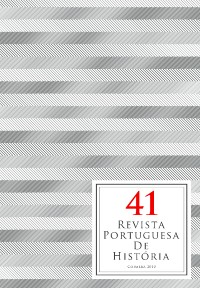Please use this identifier to cite or link to this item:
https://hdl.handle.net/10316.2/9705| Title: | Trayectoria de las rentas monásticas y del sistema agrario de Galicia desde la segunda mitad del XVI a 1835 | Authors: | Saavedra, Pegerto | Keywords: | Monasteries;Rustic assets;Contracts;Rents;Agricultural changes;16th-19th centuries;Galicia;Monasterios;Patrimonios rústicos;Foros;Rentas;Cambios agrarios;Siglos XVI-XIX;Galicia | Issue Date: | 2010 | Publisher: | Instituto de História Económica e Social, Faculdade de Letras da Universidade de Coimbra | Abstract: | Hasta la década de 1830, en que tuvo
lugar la exclaustración de los regulares y la
desamortización en Galicia existían poderosos
monasterios benitos y cistercienses,
fundados en los siglos centrales de la Edad
Media y reformados entre 1490 y 1550,
cuando fueron obligados a incorporarse a las
congregaciones castellanas. Sus extensos y
dispersos patrimonios rústicos los explotaban
mediante cesiones de larga duración foros,
a menudo estipulados por una renta fija
en especie, aunque también los hubo por
cuotas proporcionales a la cosecha. En este
trabajo se analizan, a partir de libros de
cuentas, apeos y tumbos pertenecientes principalmente
a las comunidades del Císter,
los problemas relaciones con el control de
un patrimonio parcelado y amenazado por
la «malicia» campesina y la evolución de la
rentas monásticas, comparando su trayectoria
y composición los cambios habidos en el
sistema agrario, muy importantes desde que a
mediados del XVIII se difunde el maíz. Until the decade of 1830, when the secularization of the regulars and the ecclesiastical confiscation (desamortización) in Galicia took place, there were powerful Benedictine and Cistercian monasteries, founded in the central centuries of the Middle Ages and reformed between 1490 and 1550, when they were forced to join the congregations of Castile. They exploited their extensive and scattered rustic estates through long-term disposals, emphyteusis, often set on a fixed rent in kind, although there also were those based on quota proportional to the harvest. In this paper are analyzed, from books of accounts, landmarks and property records belonging mainly to Cistercian communities, the problems related to the control of assets, parcelled and threatened by the peasant «malice», and the evolution of the monastic rents, comparing their growth and composition with the changes in the agricultural system, very important since, in the middle of the 18th century, corn spreads. |
URI: | https://hdl.handle.net/10316.2/9705 | ISSN: | 0870-4147 | DOI: | 10.14195/0870-4147_41_5 |
| Appears in Collections: | Revista Portuguesa de História |
Files in This Item:
| File | Description | Size | Format | |
|---|---|---|---|---|
| 05_-_pegerto_saavedra.pdf | 743.39 kB | Adobe PDF |  |
Items in DSpace are protected by copyright, with all rights reserved, unless otherwise indicated.
